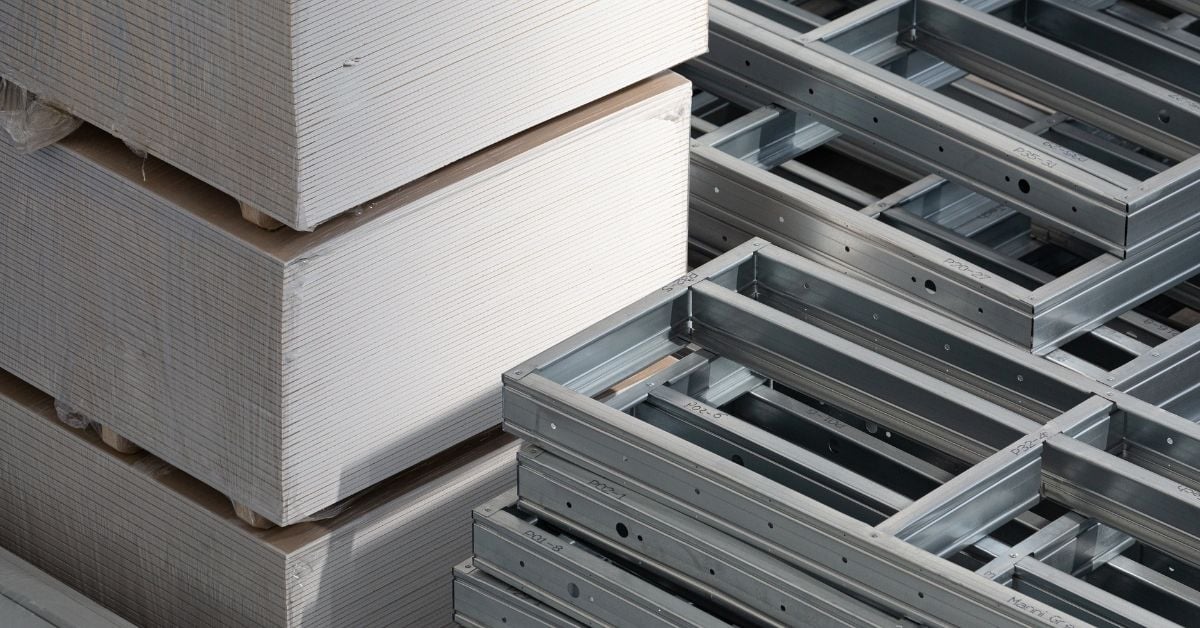The construction technique landscape is still extremely varied, and dry constructions certainly stand out among those undergoing the most development, which, unlike traditional wet ones, do not use hydraulic binders in the construction stage and on site.
Dry construction, in which Manni Green Tech specialises, is made up of lightweight steel load-bearing structures that are then completed with vertical and horizontal enclosure systems; many elements are prefabricated in the workshop, in order to speed up and facilitate the assembly process in the building site stage.
This technology is advantageous from many points of view: design, construction, performance and economics, since dry systems contribute to projects that can benefit from tax breaks such as the 110% Superbonus.
The advantages of dry construction technologies
In addition to the economic advantages resulting from the building bonus that we will soon analyse, this construction system has many other benefits:
- In steel-framed dry construction systems, the inherent characteristics of this material allow for very small profiles with high strengths, which means strong, low weight buildings can be realised. This combination results in an excellent response to seismic actions
- From an aesthetic point of view, dry construction allows the preservation of creativity and design freedom, as the careful design of the components of a building implies their total customisation and observance to the project, in terms of dimensioning, finishes and materials
- From an economic and timing point of view, being a prefabrication and assembly process, dry construction will considerably reduce the duration of construction sites, and consequently the construction costs
- In this way, by reducing construction site waste, it will also reduce the overall environmental impact of the construction, from the moment of production to the moment of realisation to disposal, as many of the components can be dismantled and recycled.
And what are the advantages from a fiscal point of view?
Incentives for new dry construction
Lightweight steel frame and dry cladding construction systems are already widely used in America, Australia and Northern Europe, but in recent years many Italian companies are also opting for this type of technology.
In addition to the advantages listed above, there is a general increasing focus of the building market on sustainability: trying to build and renovate in an environmentally friendly way.
Given this necessity, the Italian state has provided for a series of tax bonuses in 2020 for interventions that promote energy efficiency in buildings, of which dry construction is a promoter.
Building bonuses
As envisaged by the Relaunch Decree (Decree-Law No. 34/2020), it is possible to benefit from a tax deduction of 110% (up to the maximum allowed by the law) in the case of building works that improve the building's energy performance.
The so-called Superbonus provides for two types of intervention:
- Trainers, which are directly eligible for the 110% tax deduction, and which include thermal insulation of the building enclosure with an incidence of more than 25%, the replacement of winter air-conditioning systems, and interventions to reduce seismic risk
- Towed vehicles, which are only eligible for the 110% bonus if they are carried out in conjunction with one of the towed vehicles, and which include work on the removal of architectural barriers, the purchase of solar shading, the installation of photovoltaic systems and infrastructure for recharging electric vehicles.
The Superbonus therefore consists of the deduction from the Irpef of a percentage of the expenses, respecting the ceilings set by the law and distributing the reimbursement over 5 or 10 years depending on the intervention.
As an alternative to this method, an invoice discount is possible, which allows a discount of the same amount to be applied directly to the invoice of the company carrying out the work.
Lastly, the assignment of credit to banks or other financial institutions is also possible.
Moreover, the 110% Superbonus is applicable not only for extraordinary maintenance work, but also in the case of demolition and reconstruction, provided that the work can be classified as building renovation, and that it complies with anti-seismic, accessibility, and energy efficiency regulations.
Possible interventions are:
- Demolition and partial or total reconstruction of existing buildings with different contours, elevations, layout plans and typological characteristics
- Interventions aimed at the reconstruction of collaborating buildings.
In the event that these are located in historical centres or in areas subject to landscape protection, the intervention is possible provided that the outline, elevations, site and layout and typological characteristics of the pre-existing building are maintained and that no increase in building volume is envisaged
- Finally, increases in building volume are also envisaged to promote urban regeneration projects, in the only cases expressly provided for by current legislation or municipal urban planning instruments.
Tax breaks for dry construction
Among dry systems, they are covered by the Superbonus tax benefits:
- Installation of prefabricated sandwich panels, which will improve the building's thermo-acoustic, mechanical and ventilation performance by reducing dispersion of the building enclosure, thus constituting the thermal cladding, a leading intervention envisaged by the 110% Superbonus
- Use of ventilated façade systems, which provide high thermal-acoustic insulation while maintaining limited thickness compared to traditional solutions
- Use of steel load-bearing structures in the case of demolition and reconstruction work, which, together with the dry enclosure, will guarantee the anti-seismic characteristics required by the regulations related to the tax relief.
This tax benefit is intended to apply to expenditure on the purchase, supply and installation of the elements, as well as technical costs, including compliance, attestations and asseverations; VAT and professional services are to be excluded.
In addition, it will be necessary to fall within the parameters set by law in order to qualify for the bonus, which in the case of ventilated façades provide for a maximum expenditure ceiling of:
- 50000€ for each individual housing unit in the case of detached or semi-detached buildings;
- 40000€ for each individual housing unit in the case of buildings consisting of 2 to 8 units;
- 30000€ for each individual housing unit in the case of buildings consisting of more than 8 units.
Nowadays, opting for dry construction means making a sustainable, ethical and cost-effective choice, also in terms of the building's thermal, acoustic and seismic performance.


